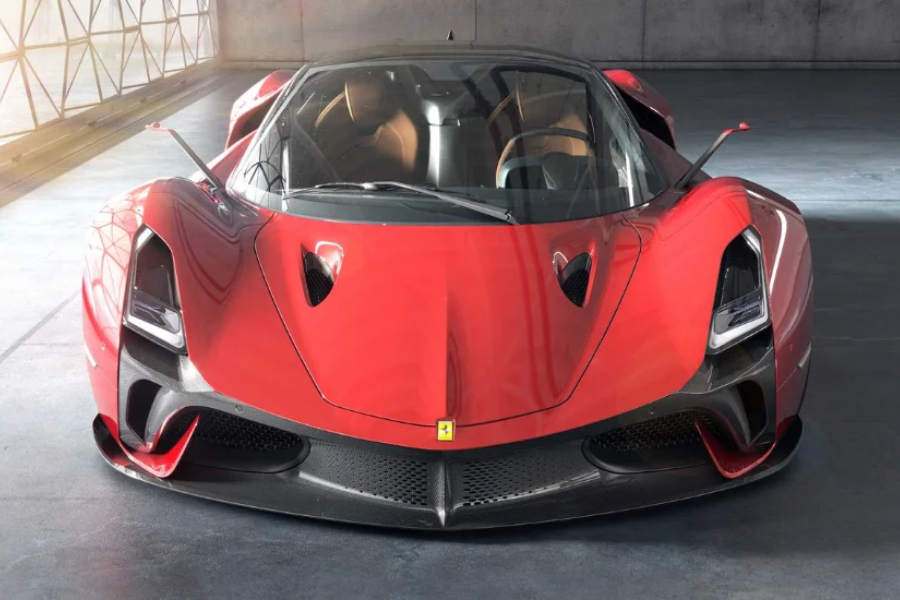Unraveling the Legacy of Ferrari: A Journey Through Automotive Excellence
Ferrari is more than just a brand; an inclination interfaces with auto fans from one side of the planet to the other. The Dancing Pony badge, which initially showed up on the hat of a Ferrari, immediately rose above its emblematic importance to turn into a portrayal of development, speed, and fine workmanship. Take an intriguing ride with us as we investigate the interesting past, remarkable innovative achievements, and persevering through effect of Ferrari on the auto business.
Introduction
Ferrari is a brand that is inseparable from development and quality all through the records of auto history. Ferrari is an Italian organization whose ascent from humble starting points to worldwide acknowledgment has changed the essence of car designing and plan. Go along with us as we look at the many strands of Ferrari’s set of experiences, following its improvement from the very outset to the present.
The Birth of a Legend
Enzo Ferrari’s fantasy was acknowledged in 1947 when the 125 S made its presentation. This noteworthy event denoted the start of a getting through inheritance instead of only the presentation of another vehicle. With its strong 1.5-liter V12 motor, the 125 S sent off Ferrari’s persistent devotion to execution and exactness.
Early Years
In a world hungry for thrills after World War II, Ferrari became a symbol of hope and aspiration. The brand established its status as a vehicle exemplary by prevailing upon devotees overall with its immovable obligation to speed and restrictiveness.
The 166 Series
With the 166 Series, Ferrari laid down a good foundation for itself in the great visiting class. Models like the 166 Entomb and 166 MM charmed the two drivers and fans. These vehicles went past basic transport; they encapsulated the best harmony among execution and style and exhibited the imagination of car fabricating.
Formula One Influence
Ferrari made their Equation One presentation in 1950, beginning an unbelievable history in motorsports. Notorious models, for example, the 275 and 250 series showed the organization’s designing ability and set new benchmarks for execution and allure.
Growth and Expansion
During Ferrari’s pinnacle, amazing models like the GTO, Daytona, and Dino were presented, laying out the brand as one of the top makers of sports vehicles. These vehicles quickly rose to unmistakable quality in mainstream society as symbols of extravagance, speed, and status.
The Cult of the GTO
Ferrari’s steadfast mission for car greatness is exemplified by the 250 GTO. Restricted to only 36 units underway, this vehicle is still among the world’s most pursued and significant cars, displaying the zenith of Ferrari’s designing aptitude.
Mid-engine Revolution with the Dino
With the stopping of the Dino in 1968, Ferrari denoted a huge defining moment in its development by creating some distance from mid-motor engineering. Something beyond a vehicle, the Dino represented Ferrari’s brassy commitment to creation and its unfazed will to push the limits of auto designing.
Technological Advancements
Ferrari kept on driving the way in car advancement all through the 1980s, as seen by unbelievable vehicles like the Testarossa. The Testarossa’s trademark side-straked profile came to address the powerful plan patterns of the time and featured Ferrari’s obligation to pushing the envelope of advancement.
Turbulent Technology
The F40 reformed the supercar business by pushing the envelope with its twin-super V8 motor and creative utilization of carbon fiber, outperforming customary execution guidelines. It was more than just a vehicle; it was a predicting of what was ahead for auto development.
F1 Transmissions and Beyond
A significant change in driving elements happened with the presentation of the F1 transmission in the F355, which consolidated the easy activity of a robotized gearbox with the exhilarating exhibition of a manual gearbox. This noteworthy innovation introduced another period of car greatness by reclassifying the guidelines for superior execution driving.
Special Editions and Collaborations
Ferrari’s joint efforts with lofty brands like Pininfarina and Abarth have created probably the most conspicuous and tastefully awesome vehicles made. Ferrari is focused on investigating new outskirts and pushing the limits of advancement, as shown by vehicles like the Enzo and LaFerrari.
Future Outlook
Ferrari keeps on being focused on advancement and quality even as the car business moves forward into charge and independent driving. Ferrari’s objectives for all electric hypercars and an unflinching obligation to upgrading the driving experience cause the organization’s future to appear to be similarly pretty much as energizing as its amazing history.
Facts:
The Birth of a Legend: Enzo Ferrari’s dream materialized in 1947 with the debut of the 125 S, showcasing Ferrari’s commitment to performance and precision.
Formula One Influence: Ferrari’s entry into Formula One in 1950 marked the beginning of a legendary motorsport history, with iconic models like the 275 and 250 series showcasing the brand’s engineering prowess.
The Cult of the GTO: The 250 GTO, limited to just 36 units, remains one of the world’s most coveted and valuable cars, symbolizing Ferrari’s relentless pursuit of automotive excellence.
Mid-engine Revolution with the Dino: Ferrari shifted away from front-engine design with the introduction of the Dino in 1968, reflecting the company’s bold approach to innovation.
Technological Advancements: Throughout the 1980s, Ferrari led the way in automotive innovation with groundbreaking vehicles like the Testarossa, showcasing cutting-edge design and engineering.
Turbulent Technology: The F40 revolutionized the supercar industry with its twin-turbo V8 engine and innovative use of carbon fiber, setting new standards for performance and design.
F1 Transmissions and Beyond: The introduction of the F1 transmission in the F355 marked a significant advancement in driving dynamics, combining the ease of an automatic gearbox with the thrill of manual driving.
Special Editions and Collaborations: Collaborations with prestigious brands like Pininfarina and Abarth have resulted in visually stunning and technologically advanced vehicles like the Enzo and LaFerrari.
Summary:
Ferrari’s journey through automotive excellence is marked by innovation, performance, and a relentless pursuit of perfection. From its humble beginnings with the 125 S to its iconic status in Formula One and the production of legendary models like the 250 GTO and F40, Ferrari has consistently pushed the boundaries of automotive engineering and design. Through technological advancements, collaborations, and a commitment to quality, Ferrari continues to shape the future of the automotive industry with electrifying hypercars and a steadfast dedication to enhancing the driving experience.
FAQs :
What is the significance of the 166 Series in Ferrari’s history?
The 166 Series established Ferrari’s presence in the grand touring class, showcasing a perfect balance of performance and style with models like the 166 Inter and 166 MM.
How did the introduction of the F1 transmission impact Ferrari’s vehicles?
The F1 transmission, introduced in the F355, revolutionized driving dynamics by combining the convenience of an automatic gearbox with the exhilarating performance of a manual transmission, setting new standards for high-performance driving.
What sets the 250 GTO apart from other Ferrari models?
The 250 GTO is revered for its rarity, with only 36 units ever produced, making it one of the most sought-after and valuable cars in the world. Its exceptional engineering and design exemplify Ferrari’s relentless pursuit of automotive excellence.
How does Ferrari envision its future in light of advancements in electric and autonomous driving?
Ferrari remains committed to innovation and quality, with plans to develop all-electric hypercars and enhance the driving experience despite the evolving landscape of the automotive industry, including trends towards electrification and autonomous driving.






